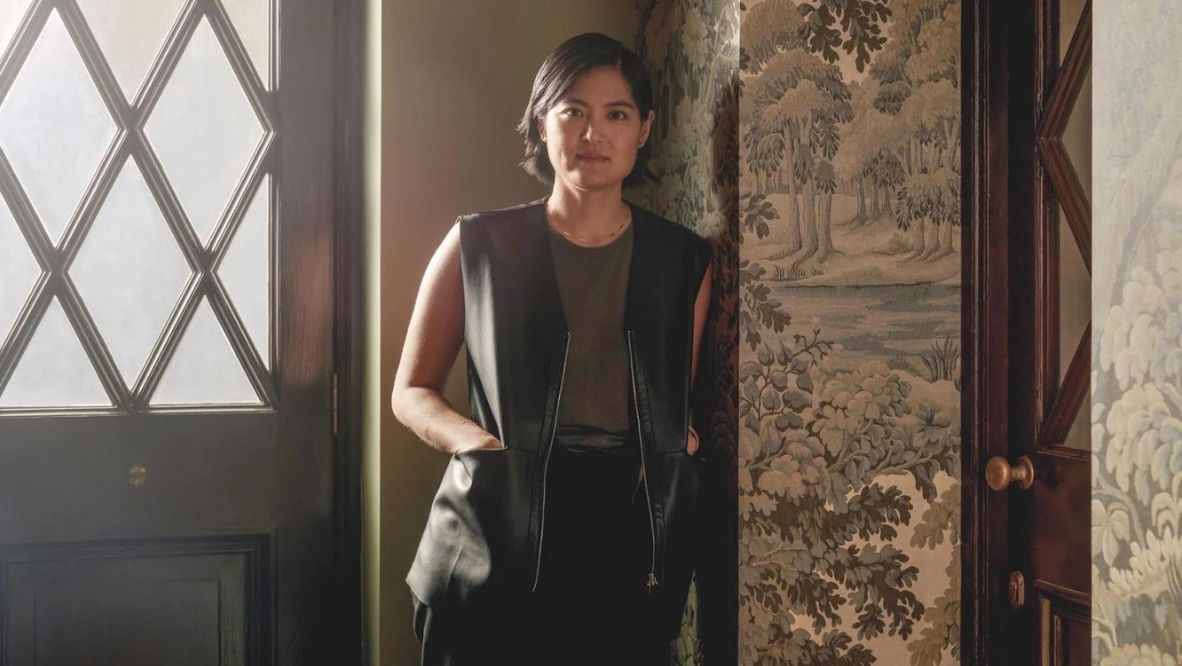The Hong Kong- and London-based interior designer boasts footprints in hospitality projects across the world, from restaurants like Mott 32, Belon and The Magistracy to the penthouse of Mandarin Oriental Hyde Park, London
Describe what you do.
We are a small studio, but we do projects globally, and it gives us a global mindset—so that means being able to work with people, clients and fabricators in different parts of the world, and bridge [the gap between] people who wouldn’t normally be connected.
Did your upbringing influence your career path?
My family is in motor manufacturing; my brother works with my dad. There are other family members who work for the business— there is an unspoken rule that you’re expected to. When I said I wanted to be an architect or an interior designer, they said “It’s not going to make any money; how are you going to support yourself ?”—all that traditional [way of thinking]. But I would visit factories with my dad when I was young, and I remember thinking, “I don’t think I could [do this].” It wasn’t so much about the work; it was the environment that I really cared about—there are no windows in these spaces, and the people don’t seem to care about that at all. I don’t think I can hang out with people who don’t care as much about how they feel in an environment all day. I wanted to surround myself with people who cared about the same thing.
Did any specific experiences inspire your journey?
I remember going to the HSBC building, designed by [renowned architect] Norman Foster, in Central, with my mum. I was eight. The building felt very new at the time and very futuristic. We went up the glass escalator through the public atrium: I remember the moment we went through that space, looking at all the people—it kind of felt like an ant farm, where you see the little people doing what they needed to do. It just felt so impressive. I felt so small and humbled by the whole thing; I felt like a million dollars—it wasn’t even my money that I was going to be taking out, but I felt really important. All of those emotions came, and I thought: “Wait, this is just the space doing this to me.” I asked my mum who makes these buildings, and she told me they’re called architects.
In case you missed it: Olympic ice hockey goalie Kimberly Newell on unexpected paths, gaining perspective and achieving peak performance
Tell us about your creative process.
At the beginning, part of what I do feels like a curation—gathering different players for an orchestra: who are the different parts that are going to be required to play the best piece? So [those are] the contractor and the different people who supply our materials. [Another consideration is] is it the right time to bring on somebody we’ve worked with before? Maybe they have a passion for Hong Kong, or they really love this F&B concept. So it’s bringing those different bits and pieces together. And hopefully the client gets as excited as we do about it.
Collaboration is a big part of design projects. How do you approach collaborating with clients?
I try to put myself in the shoes of what drives the client. We want them to be successful businesspeople; we want their concept to have longevity to it. It actually took me time to get into this mindset; in the beginning [of my career], I thought: this is a great idea, why wouldn’t they [the client] pay for it? But more and more, [I am thinking]: is this something that is going to be sustainable? Is there something that is going to make money? If it’s sustainable, financially, then it means it’s a model that we’re not going to have to renovate again in two years, or it’s not going to shut down. We want to create concepts that last, first and foremost, before even thinking about what the design looks like.
What are some roadblocks you face, and how do you overcome them?
It’s not all smooth sailing. Sometimes products have to go on pause; some projects don’t ever see the light of day. Design is so emotional. We get really tied to it—“but we’ve been working on it so much!”—and we don’t understand why it can’t be built. I need to keep the morale going [with my team]. Understanding the bigger picture and being able to see another perspective means we can move on and learn from it.
